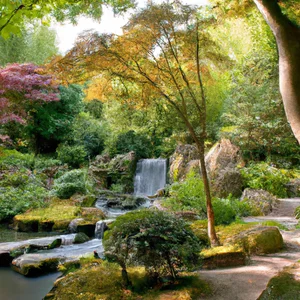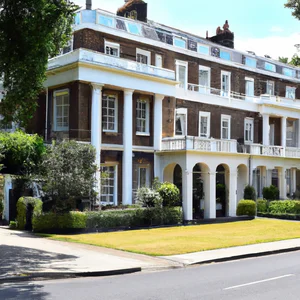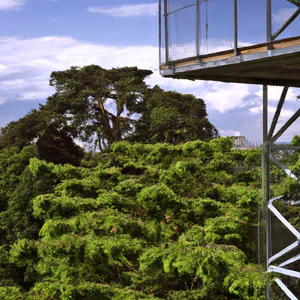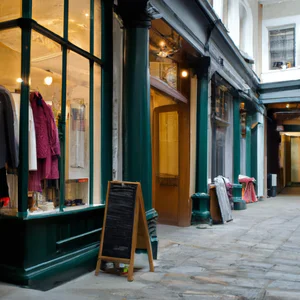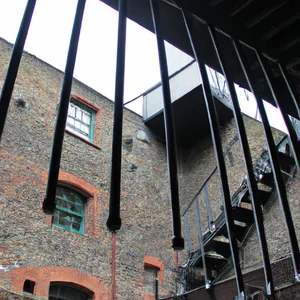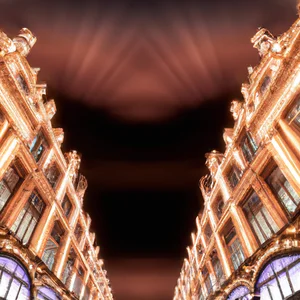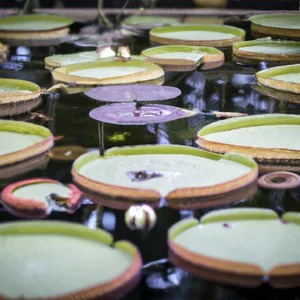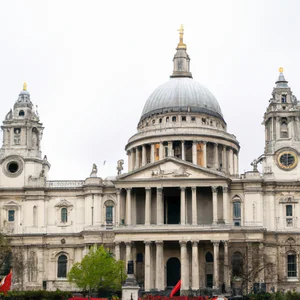Book your experience
Free attractions in London
Hey, if you’re thinking of popping into London, I’ll tell you straight away that there are tons of places you can visit without spending a penny! Yes, you read that right, free! And who doesn’t love a good savings, right? I’ll tell you a little about these attractions which, in my opinion, are really worth a visit.
The British Museum: This place is a real treasure. You get lost among Egyptian mummies and works of art that tell stories from centuries ago. The first time I went, I felt like an explorer in the past. It’s a bit like traveling through time!
Hyde Park: Ah, how wonderful! It is the ideal place for a walk, perhaps with an ice cream in hand. I remember spending an afternoon there chatting with some friends, and we got lost in the immensity of the greenery. I tell you, it’s a nice way to get away from the frenzy of the city for a bit.
Borough Market: It’s not exactly free, but walking through the stalls and smelling the aromas of the food is an experience not to be missed. Even just watching people savor local specialties is fascinating. But be careful, you might end up buying something!
The Tate Modern: If you are a lover of contemporary art, this place is a real bomb. The works you can find here are so different and extravagant that they will leave you speechless. The first time I visited, I felt a little confused, but in a good way!
Camden Market: There’s crazy energy here! It is a mix of styles, colors and cultures. Every time I go there, I always discover something new. Maybe you’ll find a strange object or a dress you never thought you’d wear.
The Changing of the Guard at Buckingham Palace: It’s a classic, okay, but seeing those soldiers in uniform is like a dive into history. Every time I’ve gone, there’s an incredible crowd, but the atmosphere is always electric.
The Natural History Museum: Here you feel a bit like a child! The dinosaurs, the rooms full of bones and stuffed animals… it’s a dream for those who love nature. Every corner tells you something fascinating. My favorite part? The giant dinosaur skeleton staring down at you!
The Southbank Centre: This is a super lively place, full of events and street artists. Walking along the river, you can stop to listen to some music or simply enjoy the view.
The Sky Garden: If you want a breathtaking view of the city, this is the place. It’s like having London at your feet! The first time I went up there, I thought: “Wow, what a sight!”
The Streets of Notting Hill: Last but not least, this neighborhood is a dream. The colorful houses and market of Portobello will make you feel like you’re in a movie. I went there once and got lost among the antique stalls, it was fantastic!
In short, London has a lot to offer without spending a euro. If you go there, in my opinion you should really take a look at these places. Maybe they will leave you a special memory, who knows?
Walk on the green: Hyde Park and its secrets
A personal anecdote
I still remember the first time I set foot in Hyde Park, surrounded by the scent of blooming flowers and the singing of birds that resonated in the fresh morning air. I was traveling to London for work, but that day I decided to take an hour’s break. While walking along the shady path that runs alongside the Serpentine, I came across a group of friends performing an impromptu dance performance. That moment of pure spontaneity made me understand that Hyde Park is much more than just a green lung: it is a stage for London life.
Practical information
Hyde Park is one of London’s most iconic parks, spanning over 140 hectares. It is open all year round and entry is completely free. To reach it, you can use the tube, getting off at Lancaster Gate or Hyde Park Corner. Don’t forget to visit the adjacent Kensington Gardens, where you’ll find the famous Peter Pan statue and beautiful flower gardens.
An insider tip
Many visitors stick to the main trails, but if you want to discover a hidden corner, head to the Diana Memorial Fountain, a quiet and picturesque area where you can sit and reflect. Here, the water flows in a circle, creating an atmosphere of peace that might surprise you amidst the hustle and bustle of the city. Bring a book or a picnic with you and enjoy a few hours of serenity.
Cultural and historical impact
Hyde Park is not just a place of leisure; it is also full of history. He has witnessed historic events, such as free speech demonstrations in the 19th century. Today, the park continues to host concerts, events and cultural celebrations, keeping alive the tradition of being a place of meeting and expression.
Sustainable tourism
For a more sustainable experience, I recommend renting a bike and pedaling along the park’s trails. Not only will you reduce your carbon footprint, but you will also have the opportunity to explore every hidden corner of Hyde Park. Several companies offer affordable rentals, making it easy and fun to discover the park in an eco-friendly way.
Immersive atmosphere
Imagine walking among the centuries-old trees, breathing the fresh air and watching the swans fly over the lake. The laughter of children playing in the meadows and the sound of leaves rustling in the wind create an atmosphere of celebration and relaxation. Every step in this park brings you closer to a more authentic London, far from the din of busy streets.
Activities to try
Don’t miss the chance to take part in one of the many free activities offered in the park, such as outdoor yoga sessions or guided tours. You can also hire a rowing boat on the Serpentine and enjoy a unique view of the London skyline from the lake.
Myths and misconceptions
A common misconception is that Hyde Park is crowded and chaotic. In fact, there are many quiet corners where you can retreat and enjoy a moment of calm. Visiting on weekdays, especially early in the morning, will allow you to enjoy the beauty of the park without the crowds.
Final reflection
Next time you are in London, ask yourself: What story could I discover while walking the paths of Hyde Park? This park is not just a place to visit; it’s an opportunity to connect with the city and with yourself, an invitation to discover the secrets that London has to offer.
Discover the British Museum: art without a ticket
An unexpected encounter
I still remember the first day I set foot in the British Museum. The majesty of the Doric portico struck me, but it was the moment I crossed the threshold that the real enchantment began. I lost track of time among the ancient Egyptian mummies and the masterpieces of Greek sculpture. In an instant, I found myself contemplating the Rosetta Stone, a fundamental piece of human history. The beauty of this place lies not only in its treasures, but also in the possibility of exploring them without paying any entrance fee.
Practical information
The British Museum, located in Bloomsbury, is open daily from 10am to 5.30pm (until 8.30pm on Fridays). It is advisable to book online to avoid queues, especially during busy periods. You can visit the official [British Museum] website (https://www.britishmuseum.org) for further details and any updates on temporary exhibitions.
An insider tip
If you want to have a unique experience, I recommend taking one of the free guided tours led by university students. These visits not only offer a fresh, young perspective on the collection, but often include little-known anecdotes and curiosities. Ask to explore the “more galleries hidden” to discover less crowded and equally fascinating works of art.
The cultural impact
The British Museum is not just a place of exhibition, but a true archive of human history. Its collection tells stories of ancient and modern civilizations, inviting visitors to reflect on cultural interconnections. From the famous collection of Mesopotamian artifacts to African works of art, each room offers an insight into the evolution of our society.
Responsible tourism
When you visit the British Museum, consider participating in events and programs that promote sustainability. Many museums, including the British Museum, are working to reduce their ecological footprint by encouraging responsible and sustainable tourism practices. You can contribute to this cause by choosing to use public transport to reach the museum.
Immersive atmosphere
Walking through the rooms, you will feel surrounded by an atmosphere of wonder and discovery. The soft lights and reverential silence of visitors create a perfect environment to immerse yourself in history. Each work of art tells a story, a journey through time that will lead you to reflect on your personal connection with the world.
An experience worth trying
Don’t miss the chance to explore “Room 1”, dedicated to Egyptian antiquities. It’s here that you can admire the mummy of Katebet, an ancient Egyptian priestess, and try to imagine the life of a woman who lived over 3,000 years ago. Also, take note of the many lectures and interactive activities offered by the museum, which can enrich your visit.
Myths to dispel
A common misconception is that the British Museum is exclusively for art or history enthusiasts. In reality, the museum offers experiences for everyone: from families with children to young people looking for inspiration. It is a place where every visitor can find something that resonates with their passions and curiosities.
A final reflection
As you leave the British Museum, take a moment to reflect on what you have learned. What was the work that struck you the most? And how can these stories of ancient civilizations influence our present and future? Visit the British Museum not just to admire the art, but to discover a part of yourself in it.
The magic of Covent Garden: unexpected street performances
An unforgettable memory
I still remember the first time I set foot in Covent Garden. I was visiting London and, while walking through the crowded market streets, I came across a street magician who, with his engaging verve, captured the attention of a heterogeneous audience. The smiles, laughter and vibrant energy that surrounded the performance transformed that simple afternoon into an indelible memory. Covent Garden is not just a place, but a living stage where culture and performance intertwine in surprising ways.
Practical information
Located in the heart of London, Covent Garden is easily accessible by tube: Covent Garden station is on the Piccadilly Line. Every day, street artists perform in various corners of the square, from performances by acrobats to talented musicians. According to the market’s official website, the program of events is constantly updated, so it’s worth taking a look before planning your visit. Also, don’t forget to explore the surrounding shops and cafes, where London’s culinary culture manifests itself in every dish.
An insider tip
A well-kept secret is that if you manage to visit Covent Garden in the early hours of the afternoon, you have a better chance of seeing unique performances, as many artists perform at that time to attract the crowds before the big evening rush. Also, try to move a little away from the main square: the adjacent streets offer more intimate and less crowded shows, where local talent shines more authentically.
Cultural and historical impact
Covent Garden has a fascinating history dating back to the 17th century. Originally a fruit and vegetable market, it has over time become an epicenter for London culture and entertainment. Its historical importance is highlighted by the presence of historic theaters such as the Royal Opera House, which continues to host world-class productions. This mix of history and modernity makes Covent Garden a place where the past and present come together in a unique experience.
Sustainable tourism practices
As you explore Covent Garden, consider supporting local artists and shops. Many of the street performers depend on tips from the public to make a living, and buying from local traders is one way to contribute to a sustainable economy. Furthermore, try to use public transport to reach the market, thus helping to reduce the environmental impact of your trip.
A vibrant atmosphere
The streets of Covent Garden are full of colours, sounds and smells that stimulate the senses. From the smell of freshly baked pastries to the melodious sounds of guitars, every corner tells a story. The historic facades of the buildings, illuminated by the golden light of the afternoon sun, create an almost magical atmosphere, perfect for an aimless walk.
An experience worth trying
If you have the opportunity, take part in a street art or improvised theater workshop, often offered by local artists. These experiences will not only allow you to immerse yourself in the local culture, but also take home a unique memory of your stay in London.
Myths to dispel
Many believe that street performances in Covent Garden are just for tourists, but in reality, they are an important expression of local culture. Street performers also attract Londoners, who stop by to have fun and support emerging talent. So don’t underestimate the authenticity of these performances: they are a true reflection of the community.
A final reflection
When you think of Covent Garden, what comes to mind? Next time you find yourself among its bustling streets, take a moment to stop and observe. What stories do artists tell you? What emotions do they arouse in you? The magic of Covent Garden lies not just in the performances, but also in the connections we make and the memories we carry with us.
Borough Market: Free tastings and culinary culture
An unforgettable experience among the flavors of London
I still remember my first visit to Borough Market, a place that looks like something out of a movie. As I walked along its cobbled streets, the scent of spices and fresh bread mixed in the air, while bustling vendors beckoned to passersby with promises of free samples. At that moment, I understood that it was not just a market, but a culinary journey that reflected the soul of London.
Practical information
Located in the heart of Southwark, Borough Market is open Monday to Saturday, with varying hours. It is easily accessible by tube (Borough stop) or bus. For those who want a more authentic experience, I recommend visiting on Thursdays or Fridays, when the market is less crowded and vendors are more likely to share stories about their products.
An insider reveals a secret
Here’s an unconventional tip: while many visitors focus on the more popular stalls such as Borough Cheese Company or Monmouth Coffee, don’t forget to explore the small kiosks offering free samples of artisan products. Once, I discovered a small stand of homemade jams that not only served samples, but also a fascinating story about how each one was inspired by family recipes.
Cultural and historical impact
Borough Market has a history dating back to the 13th century, making it one of the oldest markets in London. Originally, it was a center for the sale of meat and fish, and today continues to reflect London’s cultural diversity through its gastronomic offerings. Each stall tells a story and represents a culture, making the market a microcosm of London society.
Sustainable tourism
In an age where responsible tourism is more important than ever, Borough Market is committed to reducing its environmental impact. Many vendors use biodegradable packaging and promote local, sustainable products. Taking a visit here not only satisfies the taste buds but also supports ethical business practices.
A sensorial journey
As you stroll through the stalls, let yourself be enveloped by the bright colors of fruit and vegetables, the scents of spices and the sound of animated conversations. Every taste is an invitation to discover a new culture, a new flavour. Don’t forget to stop by the Borough Market Cookbook, where you can find recipes inspired by the dishes you’ve tried.
An activity not to be missed
For a unique experience, join one of the guided food tours that depart from the market. These tours will not only take you to discover London’s culinary secrets, but will also give you the chance to meet the producers and taste their creations straight from their hands.
Myths to dispel
A common misconception is that Borough Market is exclusively a touristy and expensive place. In fact, you can find a variety of affordable products and free tastings that make this experience accessible to everyone, from locals to visitors.
A final reflection
Next time you’re in London, take a moment to visit Borough Market. Ask yourself: what stories behind the flavors I taste can enrich my travel experience? In this corner of London, every bite is a piece of history, an experience to live and share.
Living history on Southbank: art and architecture along the river
An Indelible Memory
I remember the first time I set foot along the Southbank. It was a fresh spring morning and the sun reflected on the Thames, creating a play of light that danced among the waves. Walking along the pedestrian path, I came across a small art installation, a wooden work that told stories of daily life in London. It was in that moment that I understood how Southbank is not just a place, but a real stage of life and creativity.
Practical Information
The Southbank riverfront stretches for over 2 miles, from Westminster Bridge to Tower Bridge, and is easily accessible via the tube (stations such as Waterloo and London Bridge) and various public transport. The area is always buzzing, with events and exhibitions taking place throughout the year. To stay up to date, I recommend visiting the official Southbank Center website, where you will find a calendar of ongoing events and activities.
Insider advice
If you want to experience Southbank like a local, don’t just walk along the river. Take a moment to explore small art galleries and lesser-known exhibition spaces, such as Gabriel’s Wharf, where emerging artists display their work. Here you will also find cozy cafes and unique boutiques, away from the tourist crowds.
A Recognized Cultural Heritage
Southbank has a rich and vibrant history. This riverfront has been a hub of cultural activity since the 1950s, when the Southbank Centre, a complex housing the Royal Festival Hall, the Hayward Gallery and the National Theatre, began to take shape. Its cultural importance is not just limited to art; it is also a symbol of London’s rebirth after the Second World War, a place where the community comes together to celebrate creativity and diversity.
Sustainability and Responsibility
In an age where sustainable tourism is more important than ever, Southbank is committed to promoting responsible practices. Many of the local restaurants and shops use sustainably sourced ingredients, and the riverfront itself is an example of how public spaces can be used for eco-friendly events, such as organic markets and sustainable art festivals.
Lovely atmosphere
Walking along the river, let yourself be enveloped by the magic of Southbank: the street musicians playing enchanting melodies, the scents of ethnic cuisines mixing in the air, and the laughter of children playing in the parks. Every corner tells a story, and every step is an invitation to discover something new.
Activities to Try
Don’t forget to visit Tate Modern, one of the most important contemporary art galleries in the world. Entry is free, and temporary exhibitions always offer new perspectives on modern art. If you have time, have a coffee on the panoramic terrace to enjoy a spectacular view of the city.
Myths to dispel
A common misconception is that the Southbank is just a busy tourist area. In fact, it’s a place where Londoners gather to socialize, eat and enjoy culture. Don’t be afraid to immerse yourself in the daily life of this lively neighborhood.
A New Perspective
As you reflect on your next trip to London, I invite you to consider Southbank not just as a tourist destination, but as a place of connection and living history. What stories await you as you stroll along the river?
The Ealing mystery: a hidden corner to explore
My discovery in Ealing
It was one of those light rainy days in London, when I decided to get off the beaten track and explore a neighborhood I’d always heard of but never visited: Ealing. As I walked through the quiet streets, I came across a little coffee shop, Gail’s Bakery, that looked like something out of a storybook. The fragrance of freshly baked pastries welcomed me, and while I sipped a cappuccino, I began to discover the secrets of this hidden corner of the British capital.
Practical information about Ealing
Ealing is located west of London and is easily reached by the Central Line or Piccadilly Line. Once you arrive, you shouldn’t miss the opportunity to visit Walpole Park, a green oasis that hosts cultural events and markets throughout the year. For history lovers, Pitzhanger Manor, a neoclassical villa designed by architect Sir John Soane, offers a fascinating journey back in time.
An insider tip
If you want a truly unique experience, try to visit Ealing during July, when the Ealing Comedy Festival is held. This annual event transforms the park into an outdoor stage, with renowned comedians performing under the summer sky. A little secret? Bring a blanket with you and enjoy the show informally, like a true Londoner.
The cultural impact of Ealing
Ealing is often overlooked, but has a rich cinematic history, having been home to Ealing Studios, famous for its British comedies of the 1940s and 1950s. This cultural heritage has left an indelible mark, making the neighborhood a point of reference for cinema lovers. Walking through the streets, it’s easy to imagine the directors and actors who brought iconic films to life.
Sustainability in Ealing
Ealing is also at the forefront of sustainability, with initiatives such as Green Ealing, a project that promotes recycling and the use of public transport. Visitors can contribute to this commitment by choosing to move on foot or by bicycle, discovering the many cycle paths that cross the neighborhood.
Ealing atmosphere
Walking around Ealing, you’ll feel like you’re far away from the chaos of London. The streets are lined with centuries-old trees, the private gardens are lovingly tended and the atmosphere is relaxed. The small boutiques and local markets offer an authentic and welcoming charm, inviting you to explore every corner.
An unmissable activity
Don’t miss the chance to visit the Ealing Farmers’ Market, held every Sunday. Here you can find fresh and artisanal products, from homemade bread to local cheeses. It’s a great way to immerse yourself in the community and get a taste of the true essence of Ealing.
Myths about Ealing
A common misconception is that Ealing is just a residential area with no tourist attractions. In fact, it’s a microcosm of culture, history and nature, perfect for those looking for an authentic experience away from the tourist crowds.
Final reflection
After spending time in Ealing, I realized that every corner of London has a story to tell. What is your favorite hidden corner in the capital? You may find that the real gems lie beyond the most well-known places.
The wonders of Trafalgar Square: art and history at your fingertips
A special memory
The first time I stepped into Trafalgar Square, it was like stepping into a living postcard. I remember the smell of coffee coming from the surrounding kiosks and the sound of laughter mixing with the singing of street artists. I stopped for a moment, letting myself be captivated by the magnificence of Nelson’s Column, while a group of tourists took selfies against the backdrop of the majestic bronze lions. That scene, vibrant with life, made me feel part of something bigger: a cultural crossroads in London.
Practical information
Trafalgar Square is easily accessible by public transport, located in the heart of London and served by Charing Cross and Leicester Square tube stations. This public space, open twenty-four hours a day, is always animated by events, exhibitions and artistic performances. Don’t forget to visit the National Gallery, which overlooks the square and offers free entry to one of the world’s most important art collections.
An insider tip
While most visitors focus on Nelson’s Column and the National Gallery, few venture to explore the Fourth Plinth, a platform housing ever-evolving contemporary works of art. Every two years, the commission decides which artist to exhibit, offering a unique opportunity to see innovative installations – a true laboratory of creativity in the heart of London.
Cultural and historical impact
Trafalgar Square is not just a landmark; it is a symbol of resistance and celebration of British culture. Opened in 1845, the square commemorates the victory at the Battle of Trafalgar in 1805, an event that marked an era of naval dominance for the United Kingdom. Today, it hosts public events and celebrations that reflect the vibrant social fabric of the city.
Sustainable tourism
When visiting Trafalgar Square, consider using public transport or walking the surrounding streets. This not only reduces your environmental impact, but also allows you to discover hidden corners and local boutiques that you might otherwise miss. Often, the best way to explore is to walk slowly and let yourself be surprised.
A vivid atmosphere
Imagine sitting on one of the benches, enjoying a homemade ice cream while watching a group of breakdancers perform. The bright colors of the flags and the sounds of the musicians create a festive atmosphere. It is a place where history and modernity intertwine, where every visitor can feel at home.
An activity worth trying
I recommend you take one of the free guided tours, available almost every day. These tours not only offer fascinating stories about the square, but also entertaining anecdotes that make your experience truly memorable.
Myths and misconceptions
A common misconception is that Trafalgar Square is just a busy tourist spot. In fact, it is a center of active cultural life, where Londoners gather for events and celebrations. Don’t be fooled by the appearance of a simple crossing point; explore it with curiosity and you will discover a world of history and art.
A final reflection
When you find yourself in Trafalgar Square, ask yourself: what does the history of this place mean to me? Every corner tells a story, and every visit is an opportunity to connect with London’s past and present. Be inspired by the beauty and cultural richness of this extraordinary space, and ask yourself what other wonders await you in this vibrant city.
Street art in Shoreditch: urban and sustainable tour
When I first set foot in Shoreditch, I immediately felt the vibrant energy that permeates this London neighborhood. The walls of the houses tell stories through colorful murals and bold graffiti, transforming every corner into an outdoor art gallery. I remember one sunny morning in particular, when I found myself observing an artist at work, while he sprayed spray paint on a wall, creating a work that would become part of the visual history of this place. It is an experience that cannot be described in words, but which remains imprinted in the mind.
A hands-on exploration of street art
Shoreditch is a true paradise for urban art lovers. You don’t need to be an expert to appreciate the beauty and creativity that surrounds the streets. I recommend starting your tour in Brick Lane, famous for its iconic works and its markets. You can take a stroll along Hanbury Street and Sclater Street, where you’ll find murals ranging from works by local artists to internationally renowned pieces. Some of the best street art artists, such as Banksy and Stik, have left their mark here.
For a more in-depth guide, Street Art London offers free and paid tours that will take you to the most evocative spots, revealing the secrets behind each work. A great opportunity to discover not only the art, but also the stories of the artists who help make Shoreditch so special.
An insider tip
A little-known trick is to explore the side streets. As you stray off the beaten track, you may come across hidden street art works that are often overlooked by tourists. Search Popeye the Sailor Man by Mr. Penfold on Ebor Street or the Rone mural of a woman with an ethereal face. These pieces tell more intimate and personal stories, far from the frenzy of the more well-known places.
The cultural impact of Shoreditch
Shoreditch is not just a place of art, but a symbol of London’s cultural change. Over the last two decades, the neighborhood has seen an invasion of artists and creatives, transforming from an industrial area into a center of innovation and culture. Street art here reflects the social challenges, aspirations and identities of an ever-evolving community. This same spirit of resilience and innovation is what makes London so fascinating.
Sustainable and responsible tourism
Visit Shoreditch with a sustainable mindset – walk or cycle to explore the neighbourhood. Not only will you reduce your environmental impact, but you will also have the opportunity to discover hidden corners and local activities. Many artists use recycled materials in their work, and supporting local markets and small businesses helps keep the creative community alive.
An invitation to explore
I recommend you take some time to sit in one of the cafes on Redchurch Street and watch the people go by, letting the atmosphere envelop you. You can also bring a notebook with you and write down your impressions or draw the works that strike you most.
Street art is often thought to be just vandalism, but in reality it is a powerful means of cultural expression that deserves to be appreciated. What do you think of street art? We invite you to reflect on how each mural can tell a unique story, making every visit to Shoreditch a personal and unforgettable experience.
Reflections in Little Venice: nature and tranquility in the chaos of London
When I first set foot in Little Venice, I felt as if I had been catapulted into a corner of serenity, away from the noise of busy London. This idyllic neighborhood, characterized by serene canals and colorful houses, offers a unique experience that captures the soul of anyone who ventures there. I remember walking along the banks of the canal, listening to the sweet sound of flowing water and observing the moored boats, while a group of swans approached curiously. It was a moment of pure beauty that reminded me how important it is to carve out spaces of tranquility in everyday life.
The atmosphere of Little Venice
Little Venice is a hidden gem that offers a charming alternative to the more touristy attractions. Located a short walk from Paddington, this area is famous for its canals, gardens and waterside cafes. It’s not only a picturesque place, but also a starting point for exploring the Regent’s Canal and perhaps stumble upon a boat tour that will take you all the way to Camden Town.
Insider Tip: Don’t forget to visit the Canal Café Theatre, where you can catch cabaret and comedy shows. Even if they are not always free, there are special events and free entry evenings that are worth discovering!
A fascinating story
The history of Little Venice dates back to the 19th century, when the canal was built to facilitate the transportation of goods. Today, this area is a symbol of alternative London, a haven for artists and creatives. As you stroll, you may notice street art and murals that tell local stories and different cultures. It is a place where history and modernity intertwine, creating a unique and vibrant atmosphere.
Sustainable tourism practices
Visiting Little Venice is also an opportunity to reflect on sustainable tourism practices. You can explore the area on foot or by bike, helping to reduce your environmental impact. Additionally, many of the local cafes and restaurants are committed to using local, sustainable ingredients, allowing visitors to enjoy the authentic flavors of London without compromising the environment.
An immersive experience
Imagine spending an afternoon in Little Venice, walking along the canals, perhaps with a good book in hand. Find a quiet corner and enjoy a picnic with fresh produce from one of the local markets. Or, have a coffee at one of the cafes overlooking the water and be inspired by the beauty of the landscape. I assure you that the atmosphere is so enchanting that you will feel like you are in a romantic movie!
Myths to dispel
A common misconception about Little Venice is that it is an exclusive and inaccessible place. In fact, it is open to everyone and offers many free opportunities to explore. The beauty of this place lies precisely in its simplicity and in the possibility of immersing yourself in nature without spending a penny.
In conclusion, next time you are in London, consider paying a visit to Little Venice. I invite you to reflect: how often do we allow ourselves to get lost in places where time seems to stop, far from the daily chaos? In this corner of London, you will find the answer.
Free local events: discover the lively cultural calendar
An unforgettable memory
I still remember my first visit to London, when, walking through the streets of Notting Hill, I came across a small square animated by an open-air concert. The notes of an indie band mixed with the scent of street food, creating an atmosphere that seemed to come from a movie. That free event, discovered by chance, made me appreciate the cultural richness of London, a treasure of experiences that often remain hidden from the eyes of less adventurous tourists.
A calendar not to be missed
London is a vibrant scene, where free local events take place throughout the year. From the Notting Hill Carnival in August to the craft markets that flourish at weekends, the city offers a variety of events that celebrate its cultural diversity. To stay up to date, you can check out the Time Out London website or Visit London, which offer details on upcoming events, festivals and local activities. These sources are continuously updated and will allow you to plan your visit so as not to miss unique opportunities.
An insider tip
A little-known tip is to explore pop-up events that take place in lesser-known areas of London, such as Peckham or Hackney. These events, often organized by local artists and creatives, offer an authentic taste of London life and will allow you to interact with the community directly. Not rarely, you can find concerts, craft markets and artistic performances that are not advertised in traditional tourist circuits.
The cultural impact
The variety of free events in London reflects its history of inclusiveness and innovation. From the days of the East End and its markets, to the current multicultural festivals, the city has always welcomed diverse influences. These events are not only opportunities for entertainment, but also moments of social cohesion, where people come together to celebrate their identities and traditions.
Sustainability in focus
Attending free local events is also a responsible way to travel. Many of these events promote sustainable practices, such as reducing waste and using recycled materials. Choosing to participate in these events allows you to support the local economy and live an authentic experience, far from the usual tourist attractions.
An experience worth trying
One of the most fascinating experiences is taking part in the Greenwich+Docklands International Festival, an annual event that celebrates art, culture and community. During the festival, streets and parks are transformed into stages, with dance, theater and art installations. It’s an unmissable opportunity to immerse yourself in London culture and discover emerging talent.
Myths to dispel
Free events are often thought to be of lower quality than paid ones. However, many local artists and groups choose to perform at free events to reach larger audiences. This means you can see amazing performances without spending a penny, dispelling the myth that only expensive festivals deliver quality.
A personal reflection
At the end of the day, the true beauty of London lies in its ability to surprise. What will be your next free event to discover in the capital? This city, with its lively cultural calendar, invites you to explore and be inspired. It’s not just a trip, but an opportunity to connect with the culture and people that make it so unique.

 Architecture and Design
Architecture and Design Cities and Regions
Cities and Regions Culture and History
Culture and History Events and Festivals
Events and Festivals Fashion and Shopping
Fashion and Shopping Food and Wine
Food and Wine Nature and Adventure
Nature and Adventure Unique Experiences
Unique Experiences


















